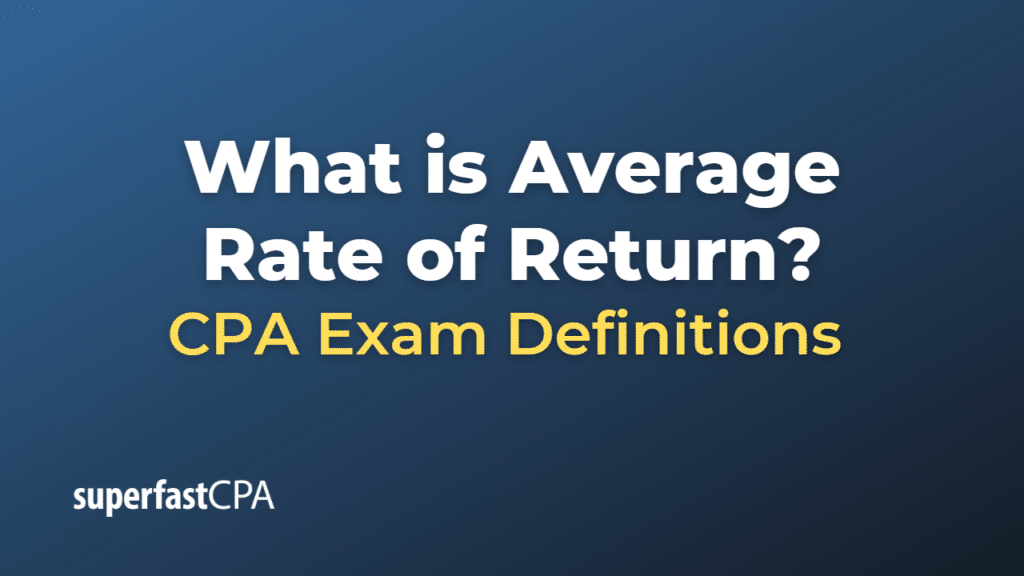Average Rate of Return
The average rate of return (ARR) is a financial metric used to evaluate the profitability of an investment or project. It calculates the average annual return generated by an investment over a specific period, typically expressed as a percentage. The ARR is helpful in comparing different investment opportunities or determining the success of a project.
The formula for the average rate of return is:
\(\text{ARR} = (\frac{\text{Average Annual Profit}}{\text{Initial Investment}}) \text{ x 100} \)
where:
- Average Annual Profit is the total profit generated by the investment over a specific period, divided by the number of years in that period.
- Initial Investment is the amount of money initially invested or the cost of the project.
Keep in mind that the average rate of return does not take into account the time value of money, which means it does not consider the effect of inflation or the potential returns from alternative investments. This limitation makes ARR a less sophisticated measure compared to other financial metrics, such as the net present value (NPV) or the internal rate of return (IRR).
Example of Average Rate of Return
Let’s assume you are considering an investment in a small business. The details are as follows:
- Initial Investment: $100,000
- Investment Period: 5 years
- Annual Profits:
- Year 1: $20,000
- Year 2: $25,000
- Year 3: $30,000
- Year 4: $35,000
- Year 5: $40,000
To calculate the average rate of return (ARR), follow these steps:
- Calculate the total profit: Add up the annual profits for each year.
Total Profit = $20,000 + $25,000 + $30,000 + $35,000 + $40,000 = $150,000 - Calculate the average annual profit: Divide the total profit by the number of years in the investment period.
Average Annual Profit = $150,000 / 5 years = $30,000 - Calculate the ARR: Divide the average annual profit by the initial investment, and multiply the result by 100 to express it as a percentage.
ARR = ($30,000 / $100,000) × 100 = 0.3 × 100 = 30%
The average rate of return for this investment is 30%. This means that, on average, the investment generates an annual return of 30% of the initial investment. However, remember that the ARR doesn’t consider the time value of money, so other financial metrics should be used in conjunction with ARR when evaluating investment opportunities.













